
Photo by vodkitchen.com
1. Donburi
Donburi refers to a family of rice bowl dishes and it mainly consists of cooked rice and toppings such as meat, raw seafood, vegetables, eggs, and so on. This simple dish is usually made using leftovers and comes in many varieties like katsudon (fried pork cutlet) and gyudon (stewed beef), to name a few.
Want some?
For some of the best donburi choices, visit Ginza Bairin.
Donburi refers to a family of rice bowl dishes and it mainly consists of cooked rice and toppings such as meat, raw seafood, vegetables, eggs, and so on. This simple dish is usually made using leftovers and comes in many varieties like katsudon (fried pork cutlet) and gyudon (stewed beef), to name a few.

Photo by Nanbantei
2. Yakitori
Although yakitori is generally associated with skewered bite-sized grilled chicken pieces, it can also refer to skewered food in general, including non-poultry items like garlic and tofu. Yakitori is seasoned with either salt or tare sauce, a thick and sweet type of soy sauce best used for grilling.
Want some?
Nanbantei at Far East Plaza is famed for its yakitori selection.
Although yakitori is generally associated with skewered bite-sized grilled chicken pieces, it can also refer to skewered food in general, including non-poultry items like garlic and tofu. Yakitori is seasoned with either salt or tare sauce, a thick and sweet type of soy sauce best used for grilling.
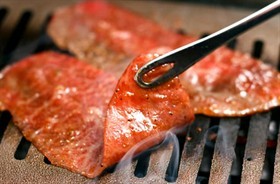
Photo by Yakiniku Yazawa
3. Yakiniku
Not to be confused with yakitori, yakiniku is in fact Japanese BBQ, or more specifically, “grilled meat”. It is essentially the Japanese equivalent of Korean BBQ and typically involves the grilling of pork and beef. Fun fact: 29 August is officially Yakiniku Day in Japan.
Want some?
Yakiniku Yazawa is one of the places to go for some awesome yakiniku.
4. Nabe
Nabemono, or nabe, refers to the large variety of Japanese hot pot dishes commonly served during winter and other cold seasons. The pots are traditionally made of clay and there are different regional varieties available throughout Japan. Some popular types of nabe dishes include oden, sukiyaki and shabu shabu, and yes, shabu shabu and sukiyaki are both different!
Not to be confused with yakitori, yakiniku is in fact Japanese BBQ, or more specifically, “grilled meat”. It is essentially the Japanese equivalent of Korean BBQ and typically involves the grilling of pork and beef. Fun fact: 29 August is officially Yakiniku Day in Japan.
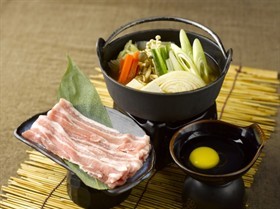
Photo by Sushi Tei
5. Sukiyaki
Sukiyaki is a standard, one-dish nabe meal prepared with a combination of thinly-sliced meat, vegetables, mushrooms, tofu, and noodles simmered in a soy sauce broth. Compared to shabu shabu, the broth for sukiyaki is richer, thicker and much sweeter.
Want some?
Sushi Tei is a great go-to place to satisfy your sukiyaki craving.
Sukiyaki is a standard, one-dish nabe meal prepared with a combination of thinly-sliced meat, vegetables, mushrooms, tofu, and noodles simmered in a soy sauce broth. Compared to shabu shabu, the broth for sukiyaki is richer, thicker and much sweeter.
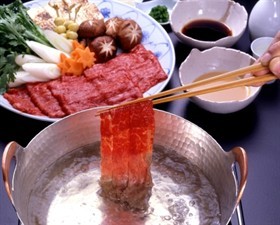
Photo by GO Productions LA
6. Shabu shabu
Like sukiyaki, shabu shabu consists of thinly-sliced meat. The difference is that for shabu shabu, you cook your own meat or other ingredients by swirling them around the soup before dipping them into sauces as a finishing touch. Also, the soup for shabu shabu tends to be more savoury than sweet, as opposed to sukiyaki broth.
Want some?
Head to Shabu Shabu Gen for top-grade stuff like premium wagyu beef and Kurobuta pork.
Like sukiyaki, shabu shabu consists of thinly-sliced meat. The difference is that for shabu shabu, you cook your own meat or other ingredients by swirling them around the soup before dipping them into sauces as a finishing touch. Also, the soup for shabu shabu tends to be more savoury than sweet, as opposed to sukiyaki broth.
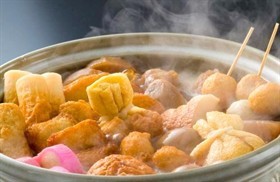
Photo by Ichimasa Kamaboko Co., Ltd.
7. Oden
Oden is easier to distinguish from the rest of its siblings in the nabe family because of its main light-coloured ingredients such as fishcakes, daikon radish and boiled eggs, all stewed in a light, soy-flavoured soup. Oden is a popular winter dish and can often be found in Japanese convenience stores during cold seasons.
Want some?
For superb, value-for-money oden, pop by Izakaya Nijumaru Restaurant at Cuppage Plaza.
Oden is easier to distinguish from the rest of its siblings in the nabe family because of its main light-coloured ingredients such as fishcakes, daikon radish and boiled eggs, all stewed in a light, soy-flavoured soup. Oden is a popular winter dish and can often be found in Japanese convenience stores during cold seasons.
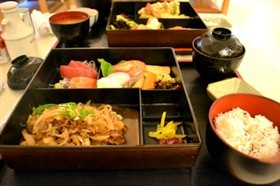
Photo by Flickr user auhres
8. Bento
These boxed meals are better known as “bento”. They are single-portion meals that come with rice and small servings of meat (or fish) and vegetables. In Japan, these easy meals are available at many places such as convenience stores and even train stations.
Want some?
Dig into some great bento sets at Sugisawa Japanese Restaurant.
9. Omakase
“Omakase” is a Japanese phrase that actually means “I’ll leave it to you”. In many Japanese restaurants, Omakase courses are common and you can expect the chef to choose the dishes for you. Think of it as a sort of gamble full of culinary surprises!
Want some?
For an affordable omakase course, check out Abe’s Diner, a hidden dining joint in Tiong Bahru.
These boxed meals are better known as “bento”. They are single-portion meals that come with rice and small servings of meat (or fish) and vegetables. In Japan, these easy meals are available at many places such as convenience stores and even train stations.
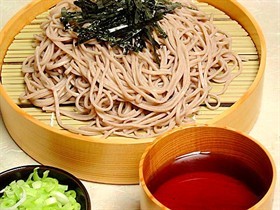
Photo by Anime Diet
10. Soba
“Soba” is the Japanese name for buckwheat – which is exactly what soba noodles are made of. These noodles are as thick as spaghetti and can be enjoyed cold with a dipping sauce or in a piping hot broth. They be seem similar to udon, but note that soba noodles are thinner compared to udon.
Want some?
Many love the fresh, homemade soba noodles at Shimbashi Soba.
“Soba” is the Japanese name for buckwheat – which is exactly what soba noodles are made of. These noodles are as thick as spaghetti and can be enjoyed cold with a dipping sauce or in a piping hot broth. They be seem similar to udon, but note that soba noodles are thinner compared to udon.
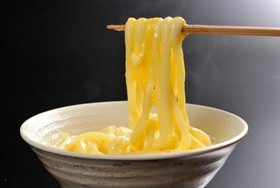
Photo by Tamoya Udon Singapore
11. Udon
Aside from the fact that udon noodles are thicker than soba noodles, another difference between the two is the flour used to make the noodles – udon is crafted from wheat flour. Udon is also usually served as a hot noodle soup with toppings like tempura (deep fried items such as shrimp).
Want some?
Tamoya Udon Singapore makes some of the best udon noodle dishes in the country.
12. Chirashi
The word “chirashi” means “scattered” and in the food world, chirashi refers to a big bowl of rice topped with all sorts of ingredients, namely fish and vegetables. You could say chirashi is like a big, messy type of sushi, only that it’s not pressed or rolled together.
Want some?
Aoki is one of the top contenders for restaurants that serve excellent chirashi in Singapore.
Aside from the fact that udon noodles are thicker than soba noodles, another difference between the two is the flour used to make the noodles – udon is crafted from wheat flour. Udon is also usually served as a hot noodle soup with toppings like tempura (deep fried items such as shrimp).
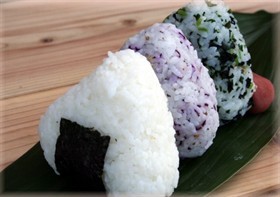
Photo by FOURHALF.Inc
13. Onigiri
Onigiri aka rice balls are made of cooked rice and wrapped in seaweed. They are usually triangle-shaped and are the perfect cheap, on-the-go snacks. Onigiri often contain a filling, like pickled Japanese plum, umeboshi, or salmon and are popular subjects of food art and cartoons because of their adorable size.
Want some?
Yoshinoya has different onigiri flavours on the menu, from salmon to crab stick and egg mayo.
See Also:
Discover the best Japanese food in town
How about Singaporean delights that won't disappoint?
Onigiri aka rice balls are made of cooked rice and wrapped in seaweed. They are usually triangle-shaped and are the perfect cheap, on-the-go snacks. Onigiri often contain a filling, like pickled Japanese plum, umeboshi, or salmon and are popular subjects of food art and cartoons because of their adorable size.